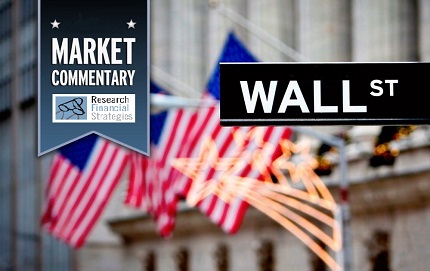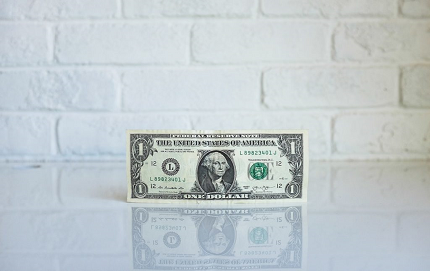Many stock markets around the world moved higher last week.
Investors’ optimism in the face of economic headwinds has confounded some in the financial services industry. Laurence Fletcher and Jennifer Ablan of Financial Times cited several money managers who believe investors have become complacent. One theory is investors’ buy-the-dip mentality has become so firmly ingrained that any price drop is seen as a buying opportunity, regardless of share price valuation.
Another theory is investors remain confident in the face of declining economic growth expectations because they expect central bankers to save the day:
“Key stock markets are hovering close to record highs even while the death count from the China-centered virus rises and travel in, out, and around the country remains heavily restricted, hurting the outlook for domestic and international companies. Regardless, stumbles in stocks are quickly reversed. To some traders, this is proof that investors believe major central banks will pump more stimulus into the financial system.”
Ben Levisohn of Barron’s doesn’t think investors in U.S. stocks are complacent. He wrote: “Yes, [investors have] decided to stay invested in U.S. stocks, but compare it with the other options. Emerging market stocks near the epicenter of the outbreak? Treasury notes with yields of just 1.59 percent? Cash? But, they haven’t sat idly by, either. They’ve dumped the stocks most exposed to coronavirus and to a slowing economy – things like energy, cruise lines, airlines, steel.”
Treasury bond markets are telling a less optimistic story than stock markets. The U.S. treasury bond yield curve has flattened in recent weeks. On Friday, 3-month treasuries were yielding 1.58 percent while 10-year treasuries yielded 1.59 percent. When there is little difference between yields for short- and long-term maturities, the yield curve is considered to be flat.
Historically, the slope of the yield curve – a line that shows yields for Treasuries of different maturities – is believed to provide insight to what may be ahead for economic growth. Normal yield curves may indicate expansion ahead, while inverted yield curves suggest recession may be looming. Flat yield curves suggest a transition is underway.
What’s your favorite remedy for a Hangover? Consuming too much alcohol comes with an unwelcome side effect: the hangover. Symptoms of a hangover typically include dehydration, fatigue, vertigo, headache, nausea, and muscle aches. If you’ve ever had one you may understand the growing market for hangover treatments.
By one estimate, Americans experience 2.6 billion hangovers each year. That may be why market research analysts think hangover remedies have the potential to become a billion-dollar industry. The Washington Post reported the number of recovery (and ‘precovery’) treatments has ballooned during the past three years. So far, the hangover remedy industry has:
- Offered treatments that include water-soluble tablets, capsules, beverages, and patches.
- Attracted $10 million of Silicon Valley venture capital.
- Birthed start-ups that generate strong sales during the first few months of operations.
The hangover market is small potatoes when compared to the market for alcoholic beverages ($1.4 trillion). However, the market for non-alcoholic cocktails is growing, too. In New York City, booze-free bars charge $13 a pop for dry cocktails.
Here’s a question: Are alcohol-free drinks a precovery hangover solution or a beverage?
Weekly Focus – Think About It
“A hangover is the wrath of grapes.”
–Dorothy Parker, American poet
Best regards,
John F. Reutemann, Jr., CLU, CFP®
P.S. Please feel free to forward this commentary to family, friends, or colleagues. If you would like us to add them to the list, please reply to this email with their email address and we will ask for their permission to be added.
Investment advice offered through Research Financial Strategies, a registered investment advisor.
Most Popular Financial Stories
Market Update
Yesterday the RFS investment committee made the tough decision to sell your “short” positions, SQQQ and SPXS. So far it is working. You're probably wondering what has...
Bitcoin – There’s No There There
The Big Guys Move InOn September 13, 2022, the biggest of the big guys on Wall Street came out with a rather earth-shaking announcement. None other than Fidelity, Citadel...
Thoughts On The Market
The market’s having a trying month. Fortunately, we are attuned to the economic reports that are coming out daily and will safeguard your portfolios by adjusting...
Uh Oh! Signs of Danger Ahead
It Was the Best of Times ….On Friday the 26th, we locked in a big win.Nine days earlier, on Wednesday the 17th, as a protective shield, we purchased a large...
Pinching Pennies, Pensions, and 401k’s
Tough TimesWhen times get rough, the natural human urge becomes one of extreme frugality. Certainly those who survived the Great Depression developed...
Special Message
Look! Have You Noticed? Listen to any politician or any news commentator these days, and they always begin a discussion or answer a question like this: Look, when I served...
* This newsletter and commentary expressed should not be construed as investment advice.
* Government bonds and Treasury Bills are guaranteed by the U.S. government as to the timely payment of principal and interest and, if held to maturity, offer a fixed rate of return and fixed principal value. However, the value of fund shares is not guaranteed and will fluctuate.
* Corporate bonds are considered higher risk than government bonds but normally offer a higher yield and are subject to market, interest rate and credit risk as well as additional risks based on the quality of issuer coupon rate, price, yield, maturity, and redemption features.
* The Standard & Poor’s 500 (S&P 500) is an unmanaged group of securities considered to be representative of the stock market in general. You cannot invest directly in this index.
* All indexes referenced are unmanaged. The volatility of indexes could be materially different from that of a client’s portfolio. Unmanaged index returns do not reflect fees, expenses, or sales charges. Index performance is not indicative of the performance of any investment. You cannot invest directly in an index.
* The Dow Jones Global ex-U.S. Index covers approximately 95% of the market capitalization of the 45 developed and emerging countries included in the Index.
* The 10-year Treasury Note represents debt owed by the United States Treasury to the public. Since the U.S. Government is seen as a risk-free borrower, investors use the 10-year Treasury Note as a benchmark for the long-term bond market.
* Gold represents the afternoon gold price as reported by the London Bullion Market Association. The gold price is set twice daily by the London Gold Fixing Company at 10:30 and 15:00 and is expressed in U.S. dollars per fine troy ounce.
* The Bloomberg Commodity Index is designed to be a highly liquid and diversified benchmark for the commodity futures market. The Index is composed of futures contracts on 19 physical commodities and was launched on July 14, 1998.
* The DJ Equity All REIT Total Return Index measures the total return performance of the equity subcategory of the Real Estate Investment Trust (REIT) industry as calculated by Dow Jones.
* The Dow Jones Industrial Average (DJIA), commonly known as “The Dow,” is an index representing 30 stock of companies maintained and reviewed by the editors of The Wall Street Journal.
* The NASDAQ Composite is an unmanaged index of securities traded on the NASDAQ system.
* International investing involves special risks such as currency fluctuation and political instability and may not be suitable for all investors. These risks are often heightened for investments in emerging markets.
* Yahoo! Finance is the source for any reference to the performance of an index between two specific periods.
* Opinions expressed are subject to change without notice and are not intended as investment advice or to predict future performance.
* Economic forecasts set forth may not develop as predicted and there can be no guarantee that strategies promoted will be successful.
* Past performance does not guarantee future results. Investing involves risk, including loss of principal.
* The foregoing information has been obtained from sources considered to be reliable, but we do not guarantee it is accurate or complete.
* There is no guarantee a diversified portfolio will enhance overall returns or outperform a non-diversified portfolio. Diversification does not protect against market risk.
* Asset allocation does not ensure a profit or protect against a loss.
* Consult your financial professional before making any investment decision.
* To unsubscribe from the Weekly Market Commentary please reply to this e-mail with “Unsubscribe” in the subject.
Sources:
https://markets.ft.com/data/world (Click on ‘Global indices’ at the bottom left of the map and choose ‘5 day’) (or go to https://peakcontent.s3-us-west-2.amazonaws.com/+Peak+Commentary/02-18-20_FinancialTimes-Global_World_Markets_Indices-Footnote_1.pdf)
https://www.ft.com/content/8732e814-4e82-11ea-95a0-43d18ec715f5 (or go to https://peakcontent.s3-us-west-2.amazonaws.com/+Peak+Commentary/02-18-20_FinancialTimes-Investor_Complacency_Sets_in_While_Coronavirus_Spreads-Footnote_2.pdf)
https://www.barrons.com/articles/dow-jones-industrial-average-gained-1-this-week-as-stocks-ignore-the-coronavirus-51581726118?mod=hp_DAY_1 (or go to https://peakcontent.s3-us-west-2.amazonaws.com/+Peak+Commentary/02-18-20_Barrons-The_Dow_Jones_Industrial_Average_Gained_1_Percent_this_Week-Let_It_Ride-Footnote_3.pdf)
https://www.treasury.gov/resource-center/data-chart-center/interest-rates/pages/textview.aspx?data=yield
https://www.investopedia.com/terms/y/yieldcurve.asp
https://www.health.harvard.edu/staying-healthy/7-steps-to-cure-your-hangover-and-ginkgo-biloba-whats-the-verdict
https://www.washingtonpost.com/business/2019/12/19/drinking-with-no-consequences-this-was-year-hangover-hack/
https://www.businessinsider.com/bars-no-alcohol-sober-dry-january-nyc-2020-1
https://www.goodreads.com/quotes/370656-a-hangover-is-the-wrath-of-grapes



